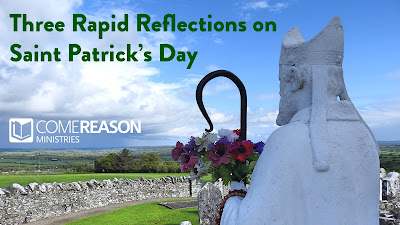Bigotry is wrong. It shouldn't be tolerated. Such a message isn't questioned. In fact, our current culture seems nearly obsessed in proclaiming its evils. That's why I was dumbstruck at the recent stage adaptation of Harper Lee's To Kill A Mockingbird. What do we do when a time-honored work of fiction is used by modern interpreters to teach and reinforce bigotry the original work was designed to denounce?
To Kill a Mockingbird, both the original work and the Academy Award winning film starring Gregory Peck, tells the story of Atticus Finch defending a wrongfully accused black man (Tom Robinson) of rape charges in the racist 1930s South. Told through the eyes of Atticus's daughter Scout, we see how labeling people and casting judgment on those different from ourselves is wrong.
Aaron Sorkin has adapted the story for the stage, and as with any work, it was necessary to make some changes. (Sorkin's best known for writing films like A Few Good Men and The West Wing television series.) For example, early in the book after Scout's brother Jem had received an air rifle for Christmas, Atticus famously admonishes Jem to be careful with his new power:1
"I'd rather you shot at tin cans in the back yard, but I know you'll go after birds. Shoot all the bluejays you want, if you can hit 'em, but remember it's a sin to kill a mockingbird."
That was the only time I ever heard Atticus say it was a sin to do something, and I asked Miss Maudie about it.
"Your father's right," she said. "Mockingbirds don't do one thing but make music for us to enjoy. They don't eat up people's gardens, don't nest in corncribs, they don't do one thing but sing their hearts out for us. That's why it's a sin to kill a mockingbird."
Sorkin moves the dialogue to Atticus's closing statement and places the conversation as a recollection of a gift he received from his own father. The change isn't a big deal as the message remains the same: prejudging someone based on his group is not only wrong, but evil.
However, race isn't the only avenue in which bigotry may assert itself, which is why I was shocked when Sorokin places a vicious attack in the mouth of one of the story's sympathetic characters. Dolphus Raymond, a white land owner who in the book associates with the black community more than with the town's bigots, tries to console the children about the wrongs they're seeing play out before their eyes. He notes that children cry when they recognize the horror of the world:
“Cry about the simple hell people give other people—without even thinking. Cry about the hell white people give colored folks, without even stopping to think they they're people, too.”2
Sorkin decides that this isn't enough. He has the children ask him why they couldn't before see that horror in their midst, and Raymond replies “When horror comes to supper, it comes dressed exactly like a Christian.” The line is delivered with dramatic flair and at least three quarters of the audience reacted as Sorkin hoped they would: with knowing guffaws and snide appreciation.
Imagine! Here we have an entire audience paying to watch what can only be described as an anti-bigotry story and they absolutely jump at the chance to revel in the bigotry of an anti-Christian line inserted into the show. This is a clear example of what I mean when I state we are now living in a post-Christian culture. You may not call someone horrific because of the color of his or her skin, but if there is a devout Christian, then go after them and giggle along the way!
Harper Lee felt differently. In a New York Times article she explained, “Surely it is plain to the simplest intelligence that ‘To Kill a Mockingbird' spells out in words of seldom more than two syllables a code of honor and conduct, Christian in its ethic, that is the heritage of all Southerners.”3
Perhaps Sorkin and those who attend his show agree that it is a sin to kill a mockingbird, but it seems that painting a target on the Christian dove is not only allowed but encouraged.
References
1. Harper Lee.
To Kill a Mockingbird. HarperCollins, 1995. 103.
2.
Lee, 229.
3. “Harper Lee Twits School Board in
Virginia for Ban on Her Novel.” New York Times, 16 Jan. 1966, p. 82.



